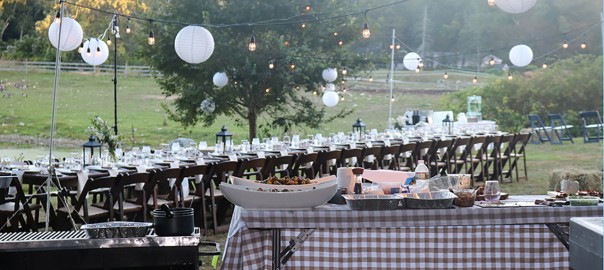Anyone who considers themselves a cook — whether that be a master chef, a harried mom making dinner for a family of six, or a fan of every cooking show on the planet — has more than a few kitchen idiosyncrasies. It may be a favorite knife, a certain cutting board that has been passed down through generations of family cooks, or a habit of finding a specific place to keep herbs and spices.
One of the more common kitchen traditions — discovered through a highly-scientific process of asking chefs we know and discussing our own experiences — is the practice of needing to cook to a specific and favorite type of music.
Some of the world’s top chefs have been known to be very territorial about not only the genre of music to get the kitchen rocking out to while cooking, but the acceptable artists, volume, and such.
One famous bit of lore has it that the late Anthony Bourdain viewed playing the wrong type of music sacrilege when he ran his own kitchen. According to an old Entertainment Weekly story, Bourdain number one rule was, ”If you play Elton John, Billy Joel, or the Grateful Dead, you will be fired!”
Bourdain, who grew up in New York during the early days of punk rock spoke about cooking and music a lot on his shows Parts Unknown and No Reservations. If you want a great dive into Bourdain’s punk roots, check out this great podcast he did with Damian Abraham for “Turned Out A Punk.”
But experiences vary. For some, the type of food one is cooking can dictate the kind of music to play. Jazz music? Louis Armstrong is a favorite for prep work or dinner. Italian music? Motown? Old-school hip-hop? Maybe they’re all a bit cliche, but that doesn’t mean that cooks across the country — professional or not — don’t still crank up their Spotify “Italian Cooking Music” playlist when preparing a bolognese.
We recently asked some of our customers about their kitchen habits, including their favorite cooking music. The responses were wide-ranging: ButcherBox subscribers like to listen to every type of music imaginable — from country to EDM, folk to pop, Christian to death metal, and artists ranging from Springsteen, the Beatles, and Van Morrison to Jack Johnson, Neil Young, The Rolling Stone, Adele and Frank Sinatra.
Our Head ButcherBox Chef, Yankel Polak, has his own rituals for cooking at home and for running a kitchen.
When doing food preparation and cooking at home, the mood or the food might dictate what he plays. For example, Chef Yakel has some strong opinions of what should be played at a Sunday brunch. According to Chef Yankel, Sunday is always a Blues day; so, while making brunch, he might play some Buddy Guy or Stevie or Tab Benoit — powerful, great music with a positive vibe. “For me, that’s the music that says, ‘Hey, I’ve got all the time in the world, and I’m gonna cook the hell out of this Hollandaise while still in my pajamas,’” says Chef Yankel.
“Event preparation is a totally different animal,” he said. “If it’s an all-day cooking marathon, uplifting electronic is probably the ticket. Something with a driving beat but in the background, so it’s not distracting.”
“You don’t want to miss a detail!” he added.
Weeknight dinners are a bit different according to Chef Yankel. “Those will probably involve something instrumental — classical or jazz music — something to help wind things down from the day. “
But when he ran a kitchen, it was quite a different approach. For Chef Yankel, music served as a way to pump up and speed up the staff as they prepped and anticipated the start of each night’s dinner service.
For example, Chef Yankel said that he used to blast heavy metal or dubstep to get the crew riled up. There was nothing gentle or mellow. “We basically turned the kitchen into a two-minute mosh-pit before a crazy night of service,” he said.
“If you weren’t hyperventilating from sheer panic at the amount of business we were about to do, you weren’t going to move fast enough to get through it. The music reflected that.”
Once service began, the volume got turned down. “The chef’s voice was all the music you needed,” Chef Yankel said.
“But when that last order left the kitchen, the volume got cranked back up to maximum for that second wind needed to clean properly.” In Chef Yankel’s kitchen, that usually entailed the blasting of some Old-School hip-hop or bachata, music to get the crew dancing as they cleaned. Otherwise, as he said, “The end of the night could be a real drag.”
So whether it serves to inspire a passion for cooking, matches the vibe of a meal, or is necessary to pump up a restaurant staff, music is an integral part of most kitchens.
There really is nothing like moving around the kitchen to some great music or standing by a grill rocking out to your favorite Spotify playlist.
We’d love to hear about your own music-inspired traditions too, so please share in the comments section below.





